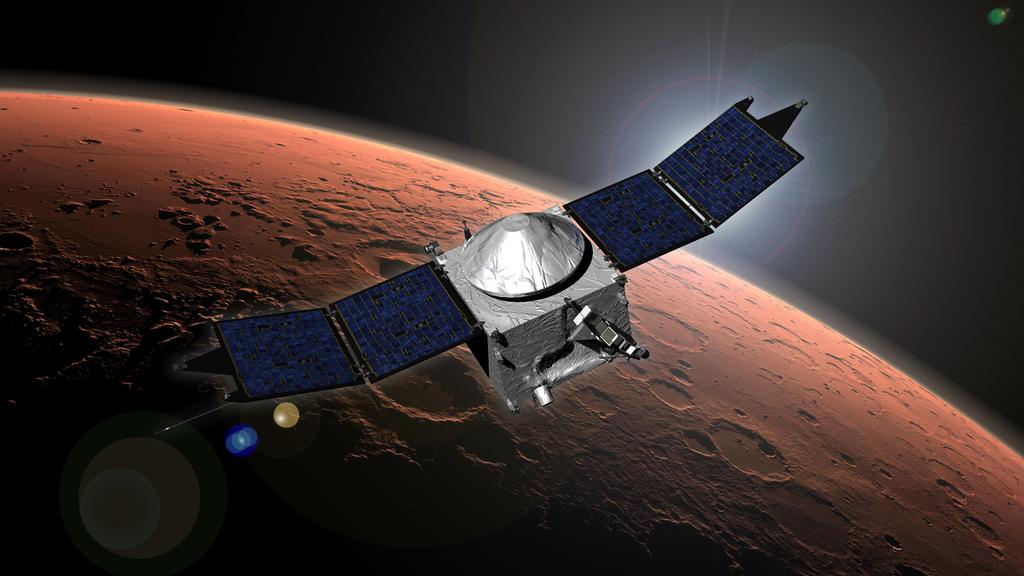NASA JPL MAVEN | 2010-323 | 05 Oct 2010
MAVEN Mission Given the Green Light to Proceed to DevelopmentNASA has given a green light for development of a 2013 Mars orbiter mission to investigate the mystery of how Mars lost much of its atmosphere: the Mars Atmosphere and Volatile Evolution (MAVEN) mission.
Clues on the Martian surface, such as features resembling dry riverbeds and minerals that only form in the presence of liquid water, suggest that Mars once had a denser atmosphere, which supported the presence of liquid water on the surface. As part of a dramatic climate change, most of the Martian atmosphere was lost. Maven will make definitive scientific measurements of present-day atmospheric loss that will offer insight into the Red Planet's history.
Approval to proceed with development followed a review at NASA Headquarters of the detailed plans, instrument suite, budget, and risk factor analysis for the spacecraft.
MAVEN Mission Home Page
University of Colorado at Boulder
NASA GSFC 10-087 | 05 Oct 2010
MAVEN Mission to Investigate How Sun Steals Martian Atmosphere
NASA GSFC | 05 Oct 2010
The Red Planet bleeds. Not blood, but its atmosphere, slowly trickling away to space. The culprit is our sun, which is using its own breath, the solar wind, and its radiation to rob Mars of its air. The crime may have condemned the planet's surface, once apparently promising for life, to a cold and sterile existence.
Features on Mars resembling dry riverbeds, and the discovery of minerals that form in the presence of water, indicate that Mars once had a thicker atmosphere and was warm enough for liquid water to flow on the surface. However, somehow that thick atmosphere got lost in space. It appears Mars has been cold and dry for billions of years, with an atmosphere so thin, any liquid water on the surface quickly boils away while the sun's ultraviolet radiation scours the ground.
Such harsh conditions are the end of the road for known forms of life. Although it's possible that martian life went underground, where liquid water may still exist and radiation can't reach.
The lead suspect for the theft is the sun, and its favorite M.O. may be the solar wind. All planets in our solar system are constantly blasted by the solar wind, a thin stream of electrically charged gas that continuously blows from the sun's surface into space. On Earth, our planet's global magnetic field shields our atmosphere by diverting most of the solar wind around it. The solar wind’s electrically charged particles, ions and electrons, have difficulty crossing magnetic fields.






